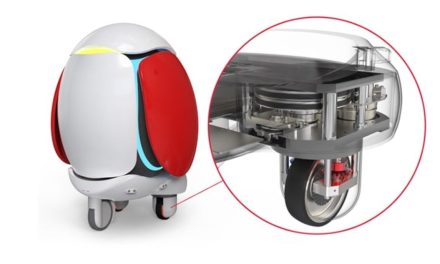 Tracking parts right back to the manufacturing data has taken another smart leap forward, with moulding machine specialist Sumitomo (SHI) Demag pioneering a fully automated In Mould Decorating (IMD) production cell. Nigel Flowers, UK Managing Director likens it to issuing each moulded component with its unique birth certificate, with all processing data held securely within the manufacturing executive system (MES).
Tracking parts right back to the manufacturing data has taken another smart leap forward, with moulding machine specialist Sumitomo (SHI) Demag pioneering a fully automated In Mould Decorating (IMD) production cell. Nigel Flowers, UK Managing Director likens it to issuing each moulded component with its unique birth certificate, with all processing data held securely within the manufacturing executive system (MES).
Designed predominantly for automotive, medical device and aerospace manufacturing environments where quality control and traceability are critical, the advance represents a colossal change in how multiple components are individually issued with a unique identifier. It means that any potential quality defect, which might not be picked up for several months, or even years, can be tracked back to the very day and cycle it was manufactured to achieve item-level traceability and conduct root cause analyses on parts and components.
By tightly integrating all elements of the plastic injection processing, IMD, robotics and data capture and management into a single turnkey cleanroom cell, part-specific traceability and process monitoring is enhanced. It represents another step towards the Smart Factory for tier 1 to 4 injection moulders, offering heightened risk management, mitigation and containment which enables organisations to respond accurately and rapidly with a targeted recall.
Putting this into context, Nigel emphasises that authentication of individual components in high liability markets, such as healthcare, vehicle manufacturing and aerospace, requires a fingerprint style approach to traceability. He explains: “Heavily regulated products like medical devices or airbag sensors, requires comprehensive audit trails. However, it is not purely about information tracking. Real-time traceability is about being able to call up data and verify the exact settings used on the injection moulding machine when that individual plastic part was made.”
Using robotics is central to the in-line manufacturing process, as even a single instance of applying an incorrect code can be a major liability cautions Nigel.
To eliminate the risk of the wrong QR code being applied to the component, Sumitomo (SHI) Demag deploys a highly dexterous 6 axis robot to remove each part from the mould. The robot holds the part during the entire time the QR code is etched on at the laser marking station, never releasing until the data has been scanned and stored in the holding data system.
“What we have created is a fully automated plastic injection moulding and laser marking station that connects and communicates the code back to MES holding system where it reconciles up with the machine processing data. In addition to boosting traceability, this synchronised data gives production managers greater visibility on product cycle times and quality,” adds Nigel.
What were previously siloed manufacturing phases can now be fully integrated by leveraging Industry 4:0 technology, notes Nigel.

